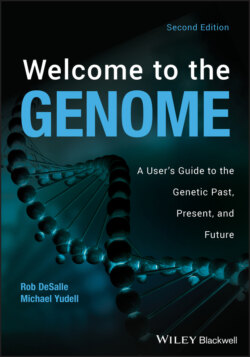Читать книгу Welcome to the Genome - Michael Yudell - Страница 27
RESEARCH MILESTONE 6: SEQUENCING A VIRAL GENOME
ОглавлениеBy the 1970s advances in sequencing technology brought biology and genetics to the brink of the genomic revolution. The most important developments in sequencing technology occurred simultaneously in laboratories on opposite sides of the Atlantic. Two groups—biologist Walter Gilbert’s group at Harvard and Frederick Sanger’s group at Cambridge—exploited the chemistry of nucleic acids to come to the same brilliant idea. Unlike Edward Southern’s method, which revealed only the presence of DNA and genes, Gilbert’s and Sanger’s methods revealed the actual sequences of nucleotides along strands of DNA. The two methods had “complementary strengths,” and were used depending on what was to be sequenced. (30) The men shared the Nobel Prize in 1980 for this work. It was Sanger’s second Nobel. (31)
Sanger’s sequencing success rested on several premises. First, he knew that he could take a piece of DNA and synthesize its entire length with DNA polymerase. He was also aware of discoveries that showed that by using a class of nucleotides called chain terminators he could interrupt the synthesis of a DNA chain. These chain terminators come in four forms—terminator G, terminator C, terminator T, and terminator A—and when they were placed in a test tube with a DNA fragment and DNA polymerase and then placed on a gel, Sanger could determine the order of nucleotides in a given DNA fragment. He accomplished this by radioactively labeling the locations where the chain terminators stopped DNA synthesis at one of the four particular nucleotides. (32)
Sanger’s method of labeling fragments of DNA with radioactivity, using gel electrophoresis to separate the fragments, and using X‐ray film to visualize them quickly became commonplace in molecular biology laboratories and is still today the basis for gene sequencing. (33) In 1977, using his own method, Sanger himself accomplished the once unthinkable by completing the sequence of the entire genome of Phi‐X174, a virus that infects E. coli in the human digestive tract. Despite the fact that this virus was just over 5000 base pairs long, it took Sanger’s group years to sequence it. (34) By 2000 the Phi‐X174 genome could be sequenced in just a few hours.
The sequence itself revealed remarkable information about genes and gene structure. Among the most intriguing was the finding that even though there are 5386 nucleotides and nine proteins made from genes in the genome of Phi‐X174, calculations showed that there was not enough DNA to code for the proteins that the Phi‐X174 genome produced. This was confusing to scientists. The larger number of proteins than available DNA in PhiX was accounted for by some stretches of the genes in the PhiX genome coding for two or more different proteins by having one gene embedded in another. (35) This important finding is characteristic of many genomes, including the human genome. (36)
